Birds have long captivated our imagination with their vibrant and diverse array of colors. From the resplendent plumage of peacocks to the striking hues of tropical parrots, the avian world is a living canvas of breathtaking beauty.
But have you ever wondered how did birds get their colours? In this captivating exploration,
we delve into the intriguing origins of bird colors, uncovering the evolutionary processes and biological mechanisms that have shaped these avian masterpieces.
From the role of pigments and structural coloration to the influence of sexual selection and environmental factors, we embark on a journey through time to understand the remarkable adaptations that have given rise to the kaleidoscope of colors seen in birds today.
Join us as we unravel the secrets behind nature’s palette, shedding light on the fascinating interplay between genetics, ecology, and aesthetics that have shaped the vibrant world of avian colors.
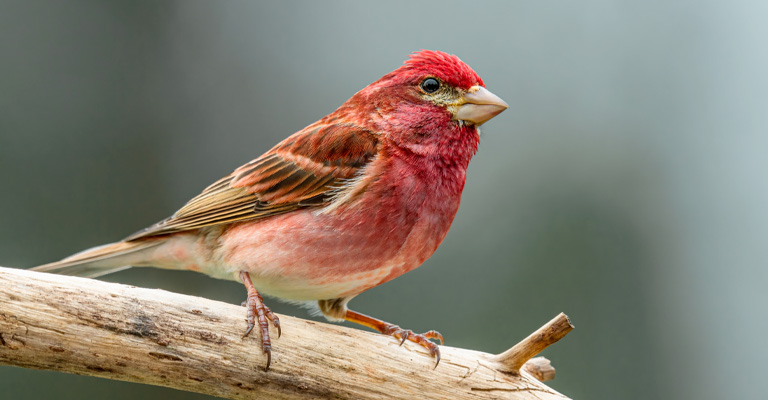
How Did Birds Get Their Colours?
Birds have evolved a stunning array of colors, which serve various purposes such as attracting mates, camouflage, and communication.
The evolution of bird colors can be attributed to a combination of genetic factors, environmental influences, and sexual selection. Let’s explore these factors in more detail.
Genetic Factors
The colors of birds are primarily determined by their genetic makeup. Genes control the production and distribution of pigments in feathers, which ultimately determine the bird’s coloration.
Different pigments, such as melanin, carotenoids, and structural colors, contribute to the wide range of colors observed in birds.
Melanin
Melanin is responsible for producing black, brown, and gray colors in bird feathers. It is produced by specialized cells called melanocytes.
The amount and distribution of melanin in feathers are influenced by genetic factors. For example, genes can regulate the production of eumelanin (black or brown) or pheomelanin (yellow or red). The combination of these pigments can create various shades and patterns.
Carotenoids
Carotenoids are organic pigments that produce vibrant red, orange, and yellow colors in bird feathers. Birds cannot synthesize carotenoids themselves, so they acquire them through their diet, primarily from fruits, vegetables, and insects.
The availability of carotenoid-rich food sources can influence the intensity of coloration in birds. For instance, flamingos acquire their pink coloration from the carotenoids present in their diet of algae and crustaceans.
Structural Colors
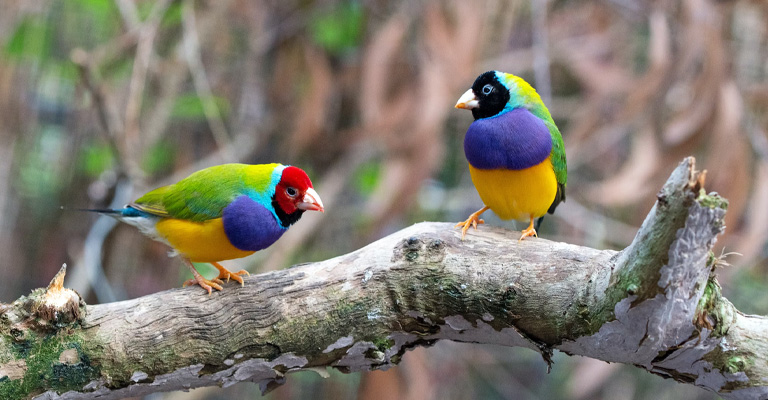
Structural colors are produced by the interaction of light with the microscopic structure of feathers. These colors are not produced by pigments but rather by the reflection, refraction, and interference of light.
The arrangement of melanin granules and air spaces within the feathers determines the specific colors observed. Structural colors can produce iridescent hues, such as the shimmering blues and greens seen in peacock feathers.
Environmental Influences
While genetics play a significant role in determining bird colors, environmental factors can also influence coloration. The environment can affect the availability of food sources, exposure to sunlight, and the need for camouflage.
Camouflage
Birds living in different habitats have evolved colors that help them blend into their surroundings, providing camouflage and protection from predators.
For example, birds living in dense forests often have duller colors, such as browns and greens, to blend in with the foliage. In contrast, birds living in open grasslands may have more vibrant colors to match the surrounding vegetation.
UV Light
Ultraviolet (UV) light is invisible to humans but visible to many birds. Some bird species have feathers that reflect UV light, which can play a role in mate selection and communication.
UV reflectance can indicate the health, age, and reproductive fitness of a bird. Males of certain bird species, like the blue tit, have brighter UV-reflecting feathers, which can attract potential mates.
Sexual Selection
Sexual selection, driven by mate choice, has played a crucial role in the evolution of bird colors. In many bird species, males exhibit more vibrant and elaborate colors compared to females.
This phenomenon is known as sexual dimorphism. Brightly colored males often use their plumage to attract females during courtship displays.
The preference for specific colors or patterns by females can lead to the evolution of more elaborate and diverse colorations in males over time.
Can Birds Change Color?
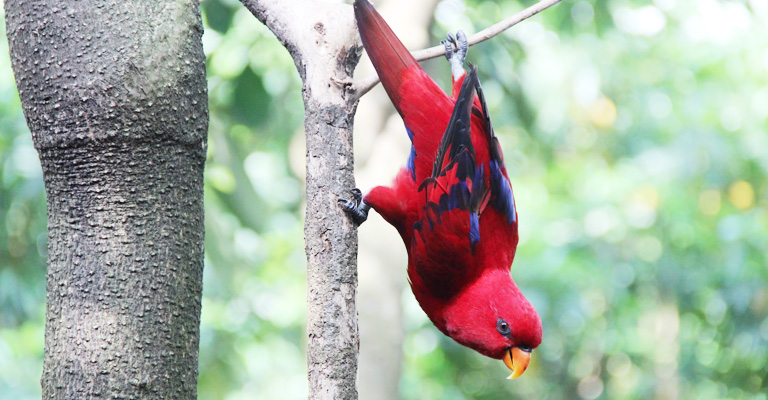
Yes, some birds can change color, but it’s important to note that not all birds have this ability. The ability to change color in birds is primarily seen in certain species that possess specialized feathers or pigments.
Let’s explore two main ways in which birds can change their color: molting and structural coloration.
Molting
Birds undergo a process called molting, where they shed old feathers and grow new ones. During this process, the color of their feathers can change.
For example, some birds may have brighter or more vibrant plumage during the breeding season to attract mates. Once the breeding season is over, they may molt into a duller plumage for better camouflage and protection.
Structural Coloration
Certain bird species have feathers that exhibit structural coloration. Structural coloration is different from pigmentation and is based on the physical structure of the feathers rather than the presence of specific pigments.
These feathers contain microscopic structures that interact with light, resulting in the appearance of different colors. The colors produced through structural coloration can change depending on the angle of light or the bird’s movements.
For instance, the iridescent colors seen in hummingbirds and some species of birds-of-paradise are a result of structural coloration.
What Countries Have the Most Colorful Birds?
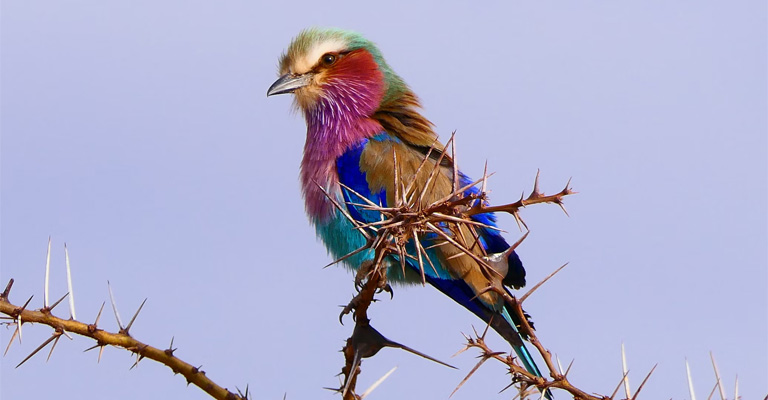
Several countries around the world are known for their rich diversity of colorful bird species. Here are a few countries that stand out for their abundance of colorful birds:
Brazil
Brazil is renowned for its incredible bird diversity, including many species with vibrant plumage. The Amazon rainforest, which spans across Brazil, is home to a vast array of colorful birds such as macaws, toucans, hummingbirds, and tanagers.
The Pantanal wetlands in Brazil also host a variety of colorful bird species, including the iconic Hyacinth Macaw.
Australia
Australia is famous for its unique and diverse wildlife, and its birdlife is no exception. The country is home to numerous colorful bird species, including the iconic Rainbow Lorikeet, Crimson Rosella, Superb Fairywren, and the stunningly vibrant Gouldian Finch.
Australia’s varied habitats, from rainforests to deserts, support a wide range of colorful bird species.
Peru
Peru is a birdwatcher’s paradise, boasting an incredible number of bird species, many of which exhibit striking colors.
The country’s diverse ecosystems, including the Amazon rainforest, Andean mountains, and coastal regions, provide habitats for numerous colorful birds.
Peru is home to species like the Andean Cock-of-the-rock, Peruvian Puffleg, Golden-headed Quetzal, and many more.
Indonesia
Indonesia, with its vast archipelago, is home to a remarkable variety of colorful bird species. The island of Papua, which is shared by Indonesia and Papua New Guinea, is particularly known for its diverse and vibrant birdlife.
Species like the Wilson’s Bird-of-paradise, King Bird-of-paradise, and Red Bird-of-paradise are just a few examples of the stunningly colorful birds found in this region.
Costa Rica
Costa Rica, located in Central America, is celebrated for its incredible biodiversity, including a wide range of colorful bird species. The country’s tropical rainforests, cloud forests, and coastal areas provide habitats for numerous brightly colored birds.
Some notable examples include the Resplendent Quetzal, Scarlet Macaw, Keel-billed Toucan, and the Blue-crowned Motmot.
Advantages of Colorful Plumage in Birds
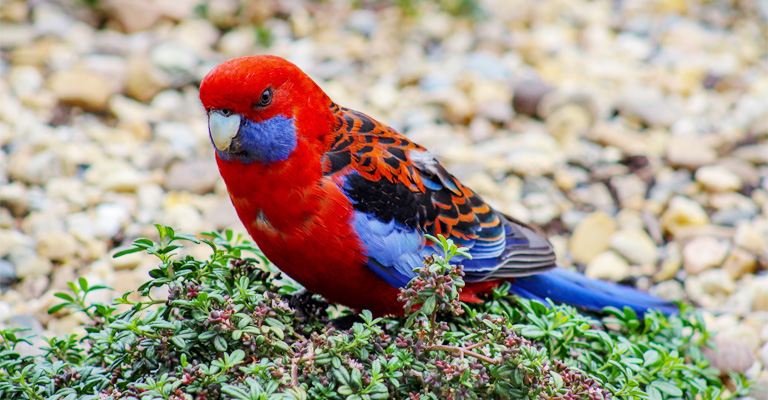
Colorful plumage in birds serves several advantageous purposes, including:
Attracting Mates
One of the primary functions of colorful plumage in birds is to attract potential mates. Bright and vibrant colors can signal the health, genetic quality, and fitness of an individual bird.
Males often display elaborate and colorful plumage during the breeding season to attract females. This phenomenon, known as sexual selection, helps ensure successful reproduction and the passing on of desirable traits to offspring.
Species Recognition
Colorful plumage can aid in species recognition and mate selection. Each bird species has its unique color patterns and combinations, which help individuals identify and choose mates of the same species.
This recognition is crucial for successful reproduction and the preservation of species.
Territory Defense
Some birds use their colorful plumage to defend their territories from intruders. Bright colors can serve as visual signals to communicate ownership and deter potential rivals.
By displaying their vibrant plumage, birds can establish and maintain their territories, reducing the likelihood of conflicts and ensuring access to resources.
Camouflage and Concealment
While it may seem contradictory, certain bird species use colorful plumage for camouflage and concealment.
In specific habitats, such as dense foliage or colorful flowers, birds with plumage that matches their surroundings can blend in effectively, making it harder for predators or prey to detect them.
Warning Signals
Some birds have evolved bright and conspicuous colors as warning signals to potential predators. These colors, often combined with specific behaviors, indicate that the bird is toxic, venomous, or unpalatable.
By advertising their unprofitability as prey, these birds deter predators from attacking them, reducing the risk of predation.
Social Communication
Colorful plumage can also play a role in social communication among birds. Different colors and patterns can convey information about an individual’s age, sex, dominance status, or readiness to mate.
This visual communication helps establish hierarchies, maintain social cohesion, and facilitate interactions within bird communities.
FAQs
Bird colors serve various purposes depending on the species. Brightly colored feathers can play a role in attracting mates, signaling dominance or fitness, or establishing territory.
Some colors also help birds blend into their surroundings, providing camouflage and protection from predators.
Yes, bird colors are influenced by genetics. The genes responsible for producing pigments and controlling feather coloration are inherited from the bird’s parents. Genetic variations can lead to different color patterns and intensities within a species.
While the basic coloration of a bird’s feathers is determined by genetics, some birds can undergo seasonal color changes.
This phenomenon, known as molting, allows birds to replace old or damaged feathers with new ones.
No, not all birds have bright colors. Bird coloration varies greatly across species, and many birds have more subdued or cryptic plumage to blend into their environment. This camouflage helps them avoid predators or sneak up on prey.
Bird colors are not the same worldwide. Different regions and habitats have influenced the evolution of bird colors.
For example, tropical rainforests are home to a wide array of brightly colored birds, while birds in arctic regions often have more muted colors to blend in with their snowy surroundings.
Bottom Line
As we conclude our exploration into the origins of bird colors, we are left in awe of the intricate and multifaceted processes that have shaped these remarkable creatures.
From the dazzling displays of courtship to the camouflage that aids in survival, bird colors serve a multitude of purposes in the natural world.
Through the lens of evolution, we have witnessed the interplay between genetic mutations, natural selection, and the environment, all contributing to the stunning diversity of avian hues.
We have marveled at the ingenious mechanisms of pigments and structural coloration, which allow birds to create an astonishing range of shades and patterns.
So, the next time you catch a glimpse of a brilliantly colored bird soaring through the sky or perched on a branch, take a moment to appreciate the intricate story behind its colors.